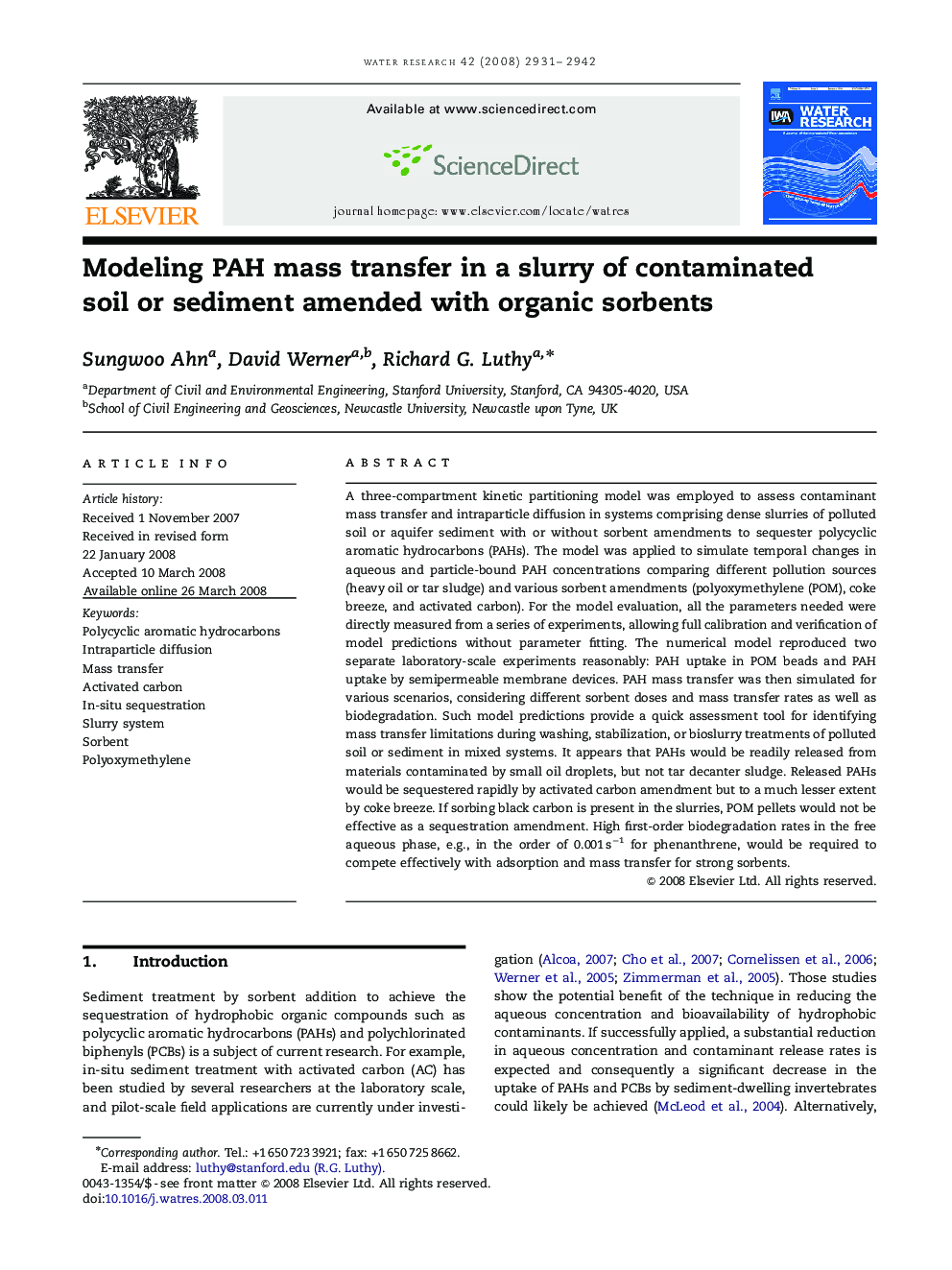| کد مقاله | کد نشریه | سال انتشار | مقاله انگلیسی | نسخه تمام متن |
|---|---|---|---|---|
| 4485566 | 1316957 | 2008 | 12 صفحه PDF | دانلود رایگان |

A three-compartment kinetic partitioning model was employed to assess contaminant mass transfer and intraparticle diffusion in systems comprising dense slurries of polluted soil or aquifer sediment with or without sorbent amendments to sequester polycyclic aromatic hydrocarbons (PAHs). The model was applied to simulate temporal changes in aqueous and particle-bound PAH concentrations comparing different pollution sources (heavy oil or tar sludge) and various sorbent amendments (polyoxymethylene (POM), coke breeze, and activated carbon). For the model evaluation, all the parameters needed were directly measured from a series of experiments, allowing full calibration and verification of model predictions without parameter fitting. The numerical model reproduced two separate laboratory-scale experiments reasonably: PAH uptake in POM beads and PAH uptake by semipermeable membrane devices. PAH mass transfer was then simulated for various scenarios, considering different sorbent doses and mass transfer rates as well as biodegradation. Such model predictions provide a quick assessment tool for identifying mass transfer limitations during washing, stabilization, or bioslurry treatments of polluted soil or sediment in mixed systems. It appears that PAHs would be readily released from materials contaminated by small oil droplets, but not tar decanter sludge. Released PAHs would be sequestered rapidly by activated carbon amendment but to a much lesser extent by coke breeze. If sorbing black carbon is present in the slurries, POM pellets would not be effective as a sequestration amendment. High first-order biodegradation rates in the free aqueous phase, e.g., in the order of 0.001 s−1 for phenanthrene, would be required to compete effectively with adsorption and mass transfer for strong sorbents.
Journal: Water Research - Volume 42, Issue 12, June 2008, Pages 2931–2942